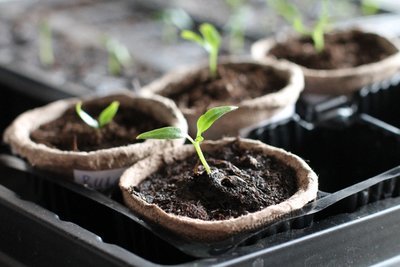Recent trends in the Hemp Farming Industry
Hemp is believed to be one of the oldest domesticated plants in existence. In fact, originally coming from the highlands of the Himalayas, it is believed that hemp has been intentionally cultivated by human beings for upwards of 10,000 years. The hemp of today, however, is distinctively different than the hemp that was once grown in China many millennia ago. In the United States, the hemp industry been rapidly growing and continually finding new ways to benefit consumers. This article will explore some recent developments in the hemp industry, discuss relevant pieces of legislation, and also offer some insight regarding trends that may be occurring in the future.
The primary difference between hemp and marijuana—which are both derivatives of the cannabis plant—is that while marijuana heavily focuses on maintaining high levels of THC (the cannabinoid that has been recognized for causing consumers to feel “high”), hemp has lower levels of THC and is generally used for other purposes. Due to the presence of CBD—a cannabinoid that does not cause intoxication but still directly interacts with the human body—there has been an increased focus on using CBD-dense extracts for various wellness purposes.
Unlike marijuana, hemp can be easily cultivated outdoors and is frequently grown for industrial purposes. Hemp can be used to produce many different consumer goods including clothes, rope, paper, and other fiber-based materials. Recently, the proven industrial usefulness (and relative safeness) had been enough to cause significant bi-partisan support for the industry at both the state and federal level. Two of the most relevant pieces of recent legislation include the Agriculture Act of 2014 and the Industrial Hemp Act of 2015.
Agriculture Act of 2014
Informally known by many people as the “Farm Bill”, the Agriculture Act of 2014 was originally introduced by Rep. Lucas D. Frank (Republican, Oklahoma). The Agriculture Act of 2014 sought to comprehensively address a number of different areas of the modern agriculture industry. The bill, which authorized over $956 billion in spending over the course of 10 years, was able to narrowly escape the House of Representatives and was then passed by the senate via unanimous consent.
While much of the discussion surrounding this comprehensive bill was primarily focused on trends in some of the already established industries, one component of the bill that seemed to fly relatively under the radar was the removal of federal restrictions on growing industrial hemp. Following the passage of this piece of legislation, the legal question surrounding industrial hemp was transferred to the states. Subsequently, many states decided to act quickly and begin allowing the growth of industrial hemp in order to be among the first to access this apparently lucrative market.
Industrial Hemp Farming Acts of 2015 and 2017
Though the right of the states to regulate the hemp industry had been vaguely restored in the Farm Bill passed the year before, congress quickly recognized that many of the inconsistent laws on the books would need to be amended. The primary focus of the Industrial Hemp Farming Act of 2015 would be to remove hemp with less than 0.3% THC from the list of federally banned controlled substances.
Despite having an unusual mixture of support from both major political parties, the Industrial Hemp Farming Act is still yet to become law. In 2017, a very similar bill was reintroduced to the floor with a few notable changes. These changes included the rights of Native Americans to grow on reservations and an increase in the maximal level of THC to 0.6%. The amended version of the bill has not yet been signed, though it seems that momentum may be beginning to build.
In many ways, the Industrial Hemp Farming Act may be redundant due to the Farm Bill of 2014. Hemp farms have already begun to flourish in at least 15 states and the federal government seems to certainly be allowing it. These states include Arkansas, Colorado, Florida, Hawaii, North Dakota, Nevada, New York, Oregon, South Carolina, Tennessee, Virginia, Washington, West Virginia, Wisconsin, and Wyoming. However, the legal ambiguity of the status quo is something that many advocates would like to see resolved.
Increased Industrial Usage
According to a recent report published by the Brightfield Group, the market for hemp derived cannabidiol (CBD) is expected to be worth over $1 billion by the end of 2020. This is in addition to the many other uses for industrial hemp such as clothes, rope, fibers, paper, and even occasionally animal feed. Despite the regulatory controversy currently occurring in congress, hemp CBD products are also anticipated to be sold (or are already being sold) in all 50 states.
Currently, the market is growing at a tremendous rate of 55% per year. If congress is able to effectively amend the controlled substances act and federally promote the industry—in addition to the efforts that have already been made by the states—then this figure is something that can likely be expected to increase. Investors of all varieties have been paying increased attention to the hemp industry and, when compared to other industries that are believed to represent similar levels of risk, return on investments have been considered to be well above average.
The report from the Brightfield Group reveals that 64.5% of growth in industrial hemp distribution has come from sales occurring through various online distribution networks. This is largely due to the fact that online sales seem to still be allowed in the many states that have not passed legislation relating to the legality of industrial hemp. Other major sources of increases in sales include 17.8% from “smoke shops” and 9% from dispensaries. Doctor’s offices and health stores have also contributed significantly to the growth of this industry.
Diversification of Hemp Extracts
CBD is overwhelmingly the most highly demanded cannabinoid that can be derived from industrial hemp (THC may be more popular, but that is typically derived from marijuana). As the industry continues to expand and search for new sources of innovation, consumers now have the option to choose from a wider variety of products than ever before.
The hemp “extracts” market consists of products in which various cannabinoids can be derived from the hemp plant and presented to consumers in a way that is considered to be pure and concentrated. Currently, there are many different varieties of hemp extracts for consumers to choose from and each of these extracts has a number of different pros and cons associated with it.
- Isolates are a type of hemp extract that is made using a process known as fractional distillation. By exploiting the different boiling points of cannabinoids, a liquefied hemp mixture can be separated into different fractions. This allows for the creation of substances that have CBD levels over 99%.
- Full Spectrum distillates are made using a similar process to the one mentioned above, but instead of focusing on separating the cannabinoids, producers focus on combining them to create a sort of synergy known as the “entourage effect.” Relevant cannabinoids include CBD, CBN, CBC, and many others. Full spectrum distillates are among the most highly recommended by those with significant experience in the industry.
- 100% THC Free extracts focus on removing all traces of THC. Though industrial hemp is typically not allowed to have more than 0.3% THC to begin with, some individuals are willing to pay more in order to assure that their product is as pure as it can possibly be.
These are just a few of the varieties of hemp extracts that are currently available and, by all practical interpretations, can generally be assumed to be fully legal. The tremendous variation of hemp extraction processes currently in existence demonstrates the industry-wide trends of diversification and specialization. As time goes on, and the industry continues to flourish, it is likely that consumers will have an even wider range of products to choose from.
Looking Towards the Future
Currently, it is estimated that over 25,000 different products could potentially be produced using hemp and it is considered to have potential to be one of the most highly demanded agricultural commodities available. Additionally, it seems as if 35 different states have at least some “hemp friendly” laws on the books and this number is one that is expected to grow even more over time.
Many states and private agencies are heavily invested in running various research and pilot programs designed to help discover the potential usefulness of hemp and the ways in which the industry can be regulated most effectively. Research has been focused on discovering the pros and cons of various cultivation processes, the strong potential for CBD as a form of medical treatment, and the ways in which the hemp industry will likely impact local economies.
In terms of hemp research the most impressive state so far has likely been Colorado. Colorado not only created an industrial hemp research grant program in 2014, they have also been leading the way in experimenting with new uses of hemp (such as animal feed). Because of the strong economic potential that the hemp industry presents and because there has been little-to-no blowback in the states in which the industry is already established, it seems that the future of the hemp industry will certainly be quite bright.








